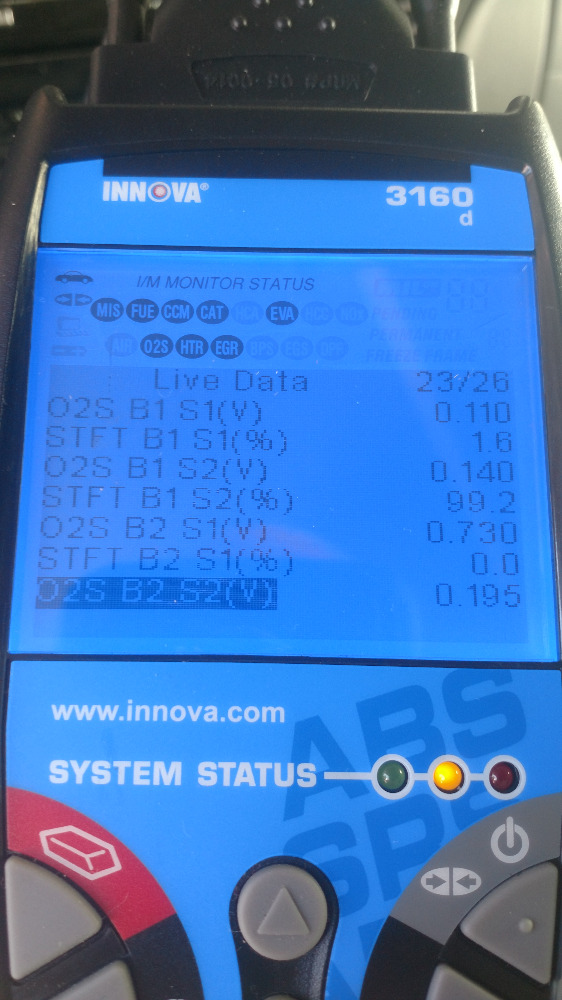In the world of automotive diagnostics, the term “STFT B1 S2” refers to the Short-Term Fuel Trim Bank 1 Sensor 2. But what does that mean exactly? Let’s dive in and understand the concept behind STFT B1 S2 and its importance in engine performance.
Fuel trim is a critical factor in diagnosing lean and rich conditions in an engine. It involves the adjustment of fuel delivery by the engine control unit (ECU) based on various sensor readings. The Short-Term Fuel Trim (STFT) represents the immediate changes made by the ECU to maintain the optimal air-fuel ratio.

Credit: m.youtube.com
STFT vs. LTFT
It’s important to differentiate between Short-Term Fuel Trim (STFT) and Long-Term Fuel Trim (LTFT). While STFT focuses on immediate adjustments, LTFT represents the long-term changes made by the ECU to compensate for consistent fuel delivery issues.
Reading live data from an OBDII scan tool allows you to monitor both STFT and LTFT values. These values can provide valuable insights into the engine’s performance and any potential problems it may be facing.
Interpreting STFT and LTFT Readings
When analyzing the STFT and LTFT readings, you need to understand what the ideal values should be. The precise values can vary depending on the vehicle make and model. However, typically, STFT should ideally be around 0% at idle, indicating that the ECU is making minimal adjustments to maintain the correct air-fuel ratio.
On the other hand, LTFT values can vary from -10% to +10%. Negative values suggest a lean condition, indicating that the ECU is adding extra fuel to compensate for a potential air leak or other fuel delivery issues. Positive values, on the other hand, imply a rich condition, meaning the ECU is decreasing the fuel supply to balance the air-fuel ratio.
The Role of STFT B1 S2
STFT B1 S2 specifically refers to the adjustments made by the ECU on the oxygen sensor located in Bank 1 Sensor 2 of the engine. The oxygen sensor (also known as the O2 sensor) is responsible for measuring the oxygen content in the exhaust gases. It provides essential feedback to the ECU, helping it regulate the fuel delivery precisely.
If your STFT B1 S2 readings are consistently high, it could indicate a problem with the oxygen sensor itself or issues with the fuel system. Conversely, extremely low STFT B1 S2 values might suggest a faulty sensor or fuel system component. Monitoring and analyzing the STFT B1 S2 values allow you to detect and resolve potential engine performance issues promptly.
Frequently Asked Questions For What Is Stft B1 S2
Why Is My Short Term Fuel Trim 99 Percent?
A short-term fuel trim of 99 percent can indicate a problem with fuel delivery or an issue with the engine’s control unit (ECU). It is important to verify the short-term and long-term fuel trim values while reading live data from an OBDII scan tool to diagnose lean or rich conditions accurately.
What Should Short Term Fuel Trim Be At Idle?
The short term fuel trim at idle should ideally be around 0%. This indicates that the engine is running at the optimal air-fuel mixture. However, slight fluctuations within the range of -5% to +5% can be considered normal. It is crucial to monitor both short term fuel trim (STFT) and long term fuel trim (LTFT) using an OBDII scan tool for accurate diagnosis of lean or rich conditions in the engine’s fuel delivery system.
What Does Stft Mean On A Scanner?
STFT stands for Short-Term Fuel Trim on a scanner. It is a crucial parameter used to diagnose lean and rich conditions in an engine. The STFT, along with the LTFT (Long-Term Fuel Trim), helps the ECU control the engine’s fuel delivery.
When reading live data from an OBDII scan tool, it is important to verify both the STFT and LTFT values.
What Should Stft And Ltft Read?
The STFT (Short Term Fuel Trim) and LTFT (Long Term Fuel Trim) readings are important for diagnosing lean and rich conditions in a vehicle’s engine. They indicate how the Engine Control Unit (ECU) is adjusting the fuel delivery. It is crucial to monitor these readings using an OBDII scan tool to ensure proper engine performance.
What Does Stft Mean On A Scanner?
STFT stands for Short Term Fuel Trim, which is a crucial parameter for diagnosing lean and rich conditions in an engine. It helps determine how the Engine Control Unit (ECU) controls the fuel delivery.
Conclusion
Short-Term Fuel Trim Bank 1 Sensor 2 (STFT B1 S2) plays a crucial role in maintaining the optimal air-fuel ratio for efficient engine performance. Understanding the readings of STFT B1 S2 and interpreting them correctly can help you diagnose and address any fuel delivery issues promptly. By monitoring STFT B1 S2 values alongside LTFT, you can ensure that your vehicle’s engine is operating at its best.





